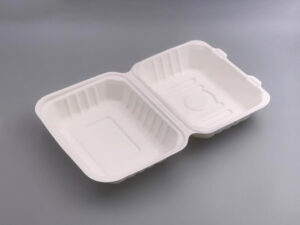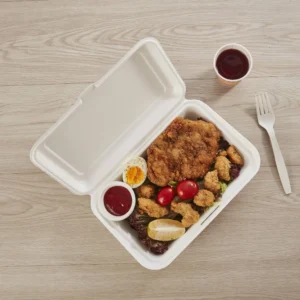Compostable Plates vs Paper vs Plastic: Cost, Performance & Environmental Impact—A Practical Comparison
Which plate wins when?
-
Hot, oily meals → Compostable plates (bagasse/CPLA) for safer heat performance and better oil resistance.
-
Cold snacks & dry foods → Paper plates can be cost-effective (mind the oil barrier).
-
Lowest unit price only → Plastic plates—but expect higher regulatory and brand risk.
What you’re actually optimising for
Most teams over-index on unit price. Real-world decisions should consider:
-
Total cost of ownership (TCO): breakage, returns, brand impact, disposal costs.
-
Compliance & ESG: certifications, PFAS-free claims, local regulation.
-
Customer experience: rigidity, handfeel, leak control, microwave suitability.
-
End-of-life reality: access to industrial/home composting, recycling contamination rates.
Side-by-side comparison
| Metric | Compostable Plates | Paper Plates | Plastic Plates (PS/PP) |
|---|---|---|---|
| Typical unit cost | Medium | Medium–Low | Low |
| Heat resistance | Medium–High (material-dependent) | Low–Medium | Medium–High |
| Oil/Water barrier | Medium–High | Low–Medium | High |
| Rigidity & handfeel | Medium–High | Medium | Medium |
| Sustainability signal | Compostable (with certification) | Recyclable* | Low recycling value |
| Regulatory/brand risk | Low | Medium | High |
| Best-fit scenarios | Hot meals, catering, takeaway | Cold foods, snacks, light duty | Rock-bottom price, short events |
Cost vs value: reducing TCO (not just unit price)
-
Fewer leaks & failures → fewer refunds and better reviews.
-
Fit-for-use (heat & oil) → less waste from warped/soaked plates.
-
Certified end-of-life → clearer claims, lower legal exposure, stronger ESG reporting.
-
Reliable packaging → reduced transit damage and storage loss.
Heat, oil, and safety—what really matters
-
Thermal stability: Bagasse and CPLA hold up better for hot dishes. PLA-coated pulp has lower heat ceilings—treat ovens with caution.
-
Oil/water barrier: Choose coating and basis weight to match menu grease levels.
-
Chemical compliance: Ask for PFAS-free declarations and heavy-metal test reports.
-
Storage: Keep dry, avoid heat/direct sun, and use FIFO to prevent performance drift.
Scenario-based recommendations
-
QSR & central kitchens: Bagasse main plates + CPLA lids; prioritise certifications.
-
Events & buffets: Compartment plates to control portions and queue speed.
-
Home & camping: OK compost HOME options for consumer-friendly disposal.
-
Premium delivery: Higher basis weight + stronger barrier to minimise leak-related complaints.
Buying checklist (copy/paste for your team)
-
Menu fit: hot vs cold; oil load; portion size.
-
Structure: diameter, depth, compartment layout, lid compatibility.
-
Performance: heat limit, leak resistance, stack strength.
-
Compliance: BPI / EN 13432 / OK compost, PFAS-free.
-
Ops: carton strength, pallet stacking, clear SKUs.
-
Pilot: sample → 1–2 week A/B test → scale after KPI pass.
FAQs
Q1: Industrial vs home composting—how should I choose?
A: Map to your disposal route. Commercial venues usually favour industrial compostability; consumer retail can highlight HOME certification.
Q2: Do compostable plates smell or shed fibers?
A: Conforming products should have minimal odor. Fiber shed is typically a molding/finish issue—switch batch or supplier if noticed.
Q3: Can I microwave or oven-heat compostable plates?
A: Many bagasse plates handle short microwave bursts; PLA-coated items have lower heat limits and aren’t recommended for ovens. Always test with your actual menu.
Q4: How do I run a low-risk pilot?
A: Trial for 1–2 weeks across representative dishes. Track leak/warp rate, customer feedback, sorting compliance, and margin impact.
Conclusion
If you’re balancing performance, brand safety, and sustainability, compostable plates are the most future-proof choice for hot or oily applications. Paper remains a smart pick for dry, low-mess scenarios, while plastic is a short-term cost play with longer-term risk.









